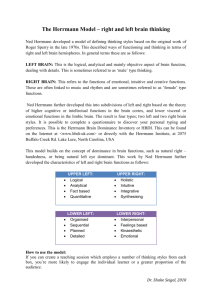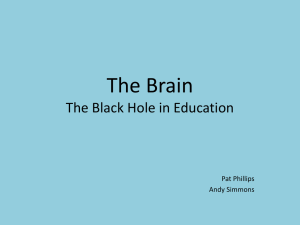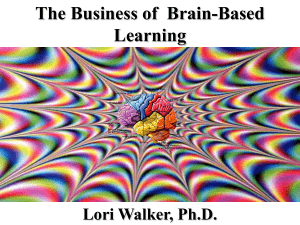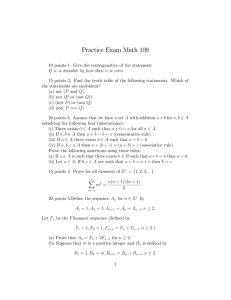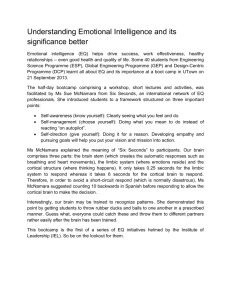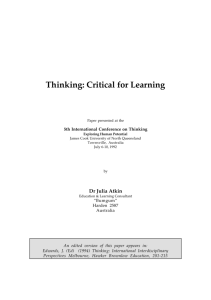Theories of Brain Organization
advertisement
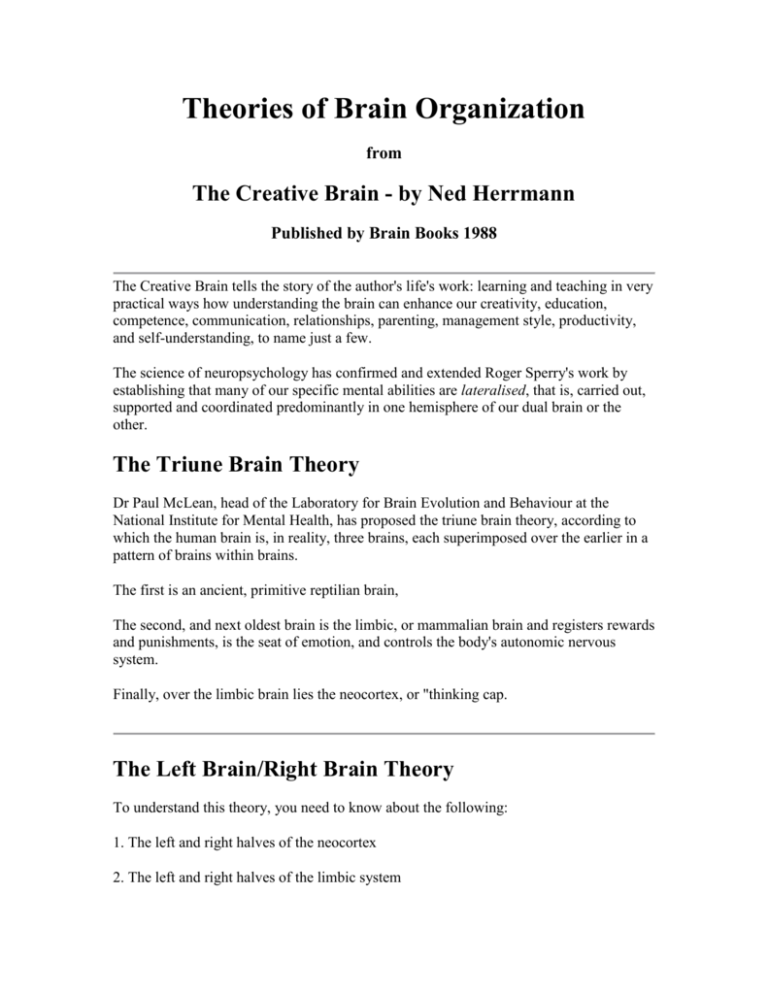
Theories of Brain Organization from The Creative Brain - by Ned Herrmann Published by Brain Books 1988 The Creative Brain tells the story of the author's life's work: learning and teaching in very practical ways how understanding the brain can enhance our creativity, education, competence, communication, relationships, parenting, management style, productivity, and self-understanding, to name just a few. The science of neuropsychology has confirmed and extended Roger Sperry's work by establishing that many of our specific mental abilities are lateralised, that is, carried out, supported and coordinated predominantly in one hemisphere of our dual brain or the other. The Triune Brain Theory Dr Paul McLean, head of the Laboratory for Brain Evolution and Behaviour at the National Institute for Mental Health, has proposed the triune brain theory, according to which the human brain is, in reality, three brains, each superimposed over the earlier in a pattern of brains within brains. The first is an ancient, primitive reptilian brain, The second, and next oldest brain is the limbic, or mammalian brain and registers rewards and punishments, is the seat of emotion, and controls the body's autonomic nervous system. Finally, over the limbic brain lies the neocortex, or "thinking cap. The Left Brain/Right Brain Theory To understand this theory, you need to know about the following: 1. The left and right halves of the neocortex 2. The left and right halves of the limbic system 3. The connectors, which are structures that provide pathways along which the different parts of the brain send signals to one another. These specialised structures, plus two patterns of brain functioning - situational functioning and iterative function - comprise key aspects of left brain/right brain theory. The Whole Brain/Four Quadrant Model Ned Herrmann showed that by incorporating the research of Paul McLean of the Triune Brain and Roger Sperry's Left Brain/Right Brain function, we can build a model of the human brain with two paired structures, the two halves of the cerebral system and the two halves of the limbic system. This allows s to differentiate between not only the more popular notions of left/right brain, but also the more sophisticated notions of cognitive/intellectual which describes the cerebral preference, and visceral, structured and emotional which describes the limbic preference. One further concept is important to understanding Ned Herrmann's Whole Brain Model, and that is dominance. The evidence of human dominance shows that wherever there are two of anything in the body, one is naturally dominant over the other. Therefore like we are right or left handed, we are also naturally `footed', `eyed'. `kidneyed', etc. We can also be thought of as `brained'. Since dominance can only occur between paired structures, the Herrmann Brain Dominance Model focuses on the Limbic and Cerebral layers of the Triune Brain. The model is a metaphorical interpretation of how we think and what are our preferred ways of knowing. The Whole Brain Model shows four distinct thinking styles. Modes of Thinking The upper (cerebral) left A analytical, mathematical, technical and problem solving. The lower (limbic) left B controlled, conservative, planned, organised and administrative in nature. The lower (limbic) right C interpersonal, emotional, musical, spiritual and the "talker" modes. Upper (cerebral) right imaginative, synthesising, artistic, holistic and D conceptual modes. More infor matio n is availa ble at anoth er Web site. The Herrmann Brain Dominance Instrument (HBDI) is a questionnaire used for assessment. Contact the Ned Herrmann group for further information. More details can be found at Ned Herrmann's Web Site. Last updated:16th October 1996
